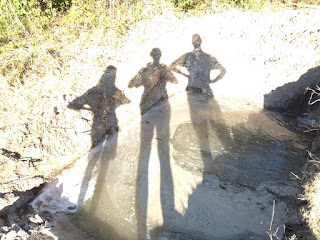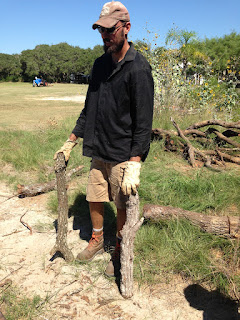Last week the turbo malfunctioned leaving the truck running off prime. It would drive itself at regular speeds, but could not, would not haul a load. Parts were ordered to replace the worn out turbo, another trip to big city #1 was made and several hours later with the help of a friend or two, the truck was back in one piece. Taking advantage of the situation by being in the big city #1, and after much discussion by those in the know, it was decided moving the trailer suspension (42") forward would help carry the shipping container load more evenly. Apparently, the truck was carrying more than it should have been causing the strain that lead to the turbo craping out. Besides, friends were willing to help in the endeavor. So, why not, it's just a little cutting, drilling, welding and presto, a better riding trailer. But hey, what do I know?
Well, the truck was fixed, the trailer was fixed, and the shipping container was still on the floor. Forklifts are a great invention. Did you know all shipping containers are moved around and placed up to six unit highs at these yards with one little ol' forklift? Watching these containers being moved is an impressive sight to see. No, these friends did not have one of these forklifts, they had the standard forklifts found in every corner shop. Three forklifts to lift the box up while the trailer is backed under and the container is ready for hauling.
But wait, what's that? The friends think removing the container for practice would be fun. Well, sure. Why didn't I think of that? The removal process, while it seems simple enough on paper, is causing some great stress. Any preparation for the real production is fine by me, especially since I am not there. Practice removal used just the truck and trailer and tractor. Nothing more, nothing less. Practicing with equipment that won't be available on D-Day wouldn't be practicing, it would be playing. I was told everything went well with the practice session. Guess I will find out soon enough being that D-Day is next weekend. Sensing my stress, a friend has volunteered to help with removal of the first shipping container. The process of removing a 40' shipping container from a flatbed 36' trailer with the use a few simple tools and a tractor is probably not done often. The friend either didn't want to miss out, really wanted to help, or wanted to be present when things went wonky and used me as an excuse. Fine by me! See you in a week.
Here's to hoping the removal goes as easy as I was told it did.

















































